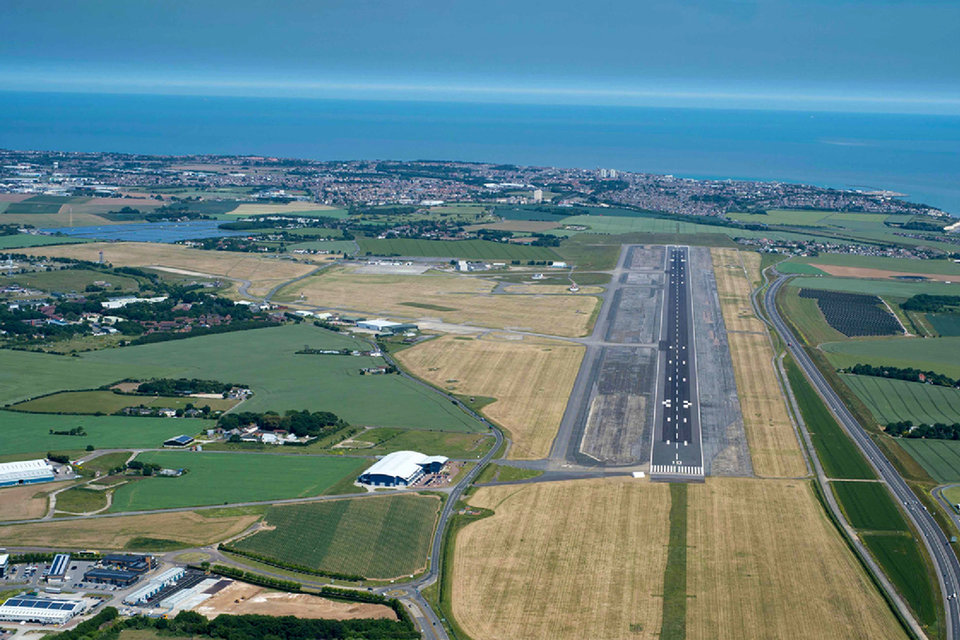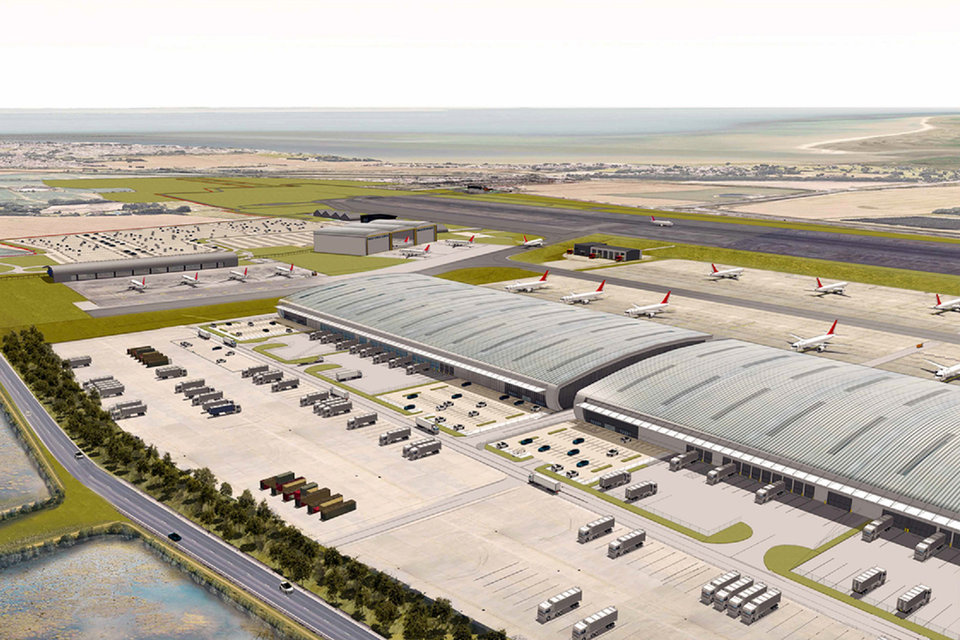Freight
Manston Airport: will plans for Britain’s new global freight hub take off?
Plans to regenerate Manston Airport in Kent into an international air freight hub are on hold after the courts ordered that the government’s approval decision be retaken. Julian Turner asks Tony Freudmann, director of developer RiverOak Strategic Partners, if the project will ever get off the ground.
The future for Manston Airport is uncertain, more than seven years after it closed, as plans to turn the site into a strategic air freight hub have been put on hold while the government decides whether to withdraw approval.
RiverOak Strategic Partners (RSP) director Tony Freudmann has more than 30 years of aviation and travel industry experience and is the former chairman of PlaneStation plc’s European airport group. RSP plan to invest £300m to turn the site, which is used for lorry parking during Operation Stack to ease lorry freight at nearby ports, into a global freight hub.
Julian Turner: What is the rationale behind RSP’s £300m investment to turn Manston Airport into a “global freight hub”?
Tony Freudmann: The UK urgently needs more air freight capacity to ship goods further afield than western Europe. Even before Brexit, goods were being trucked across the English Channel to be flown in and out of continental airports rather than directly from UK airports, because of a lack of domestic air freight capacity.
This country needs resilience in its ability to import and export as has been seen during the global pandemic where the continued flow of goods, and particularly medicines, has been more urgent than ever.
The proportion of UK air freight transported as ‘bellyhold’ – i.e. in passenger aircraft holds, rather than via dedicated freighter aircraft – is much higher than in other countries. Bellyhold is cost-effective in many cases but goods can only go where passengers go, must stick to passenger timetables, and may not be suitable for passenger holds due to their size or composition.
RSP is committed to investing in Thanet, which published data shows is one of most deprived areas in the country, creating thousands of much-needed jobs. To maximise these opportunities, it has set up the Manston Skills and Employment Board, which will help ensure that local people have the skills that will be needed, from school age onwards.

RSP director Tony Freudmann. Credit: RSP
Why did the Planning Inspectorate recommend that the project not go ahead?
The Secretary of State for Transport disagreed with the inspectors’ recommendation, which was centred around a perceived lack of need for the project. This was partly based on the proposed expansion of Heathrow, Stansted and East Midlands Airports as meeting any need.
In the event, however, the Heathrow expansion has been severely delayed and may never come to fruition, Stansted has dropped any increase in cargo flights from its expansion plans, and East Midlands Airport primarily serves the freight consolidation centres in the centre of the country.
The Secretary of State, on the other hand, concluded that there was a strong need for the project to go ahead in his decision letter, contrasting Manston’s offering with Heathrow, Stansted and East Midlands Airports, and recognising the benefits the project would bring in terms of employment and regeneration, inward investment, increased access to the UK market and resilience.
Local residents have argued that the project goes against carbon emission targets in the UK and in the Paris Agreement. How does RSP respond?
RSP has committed to everything within the airport, except emissions from aircraft, being carbon neutral within five years of opening; emissions from international flights are not currently included in the UK’s carbon emission targets.
For emissions from aviation, the Climate Change Committee has recommended that they be limited to 30 million tonnes of CO2 equivalent to allow the UK to achieve net zero, although the government has yet to endorse this. Even at full capacity and based on emissions from existing aircraft, Manston would only take up 2.4% of that figure.
Aviation emissions are an international issue and RSP will play its part in minimising them through incentives placed on its customers and offsetting the remainder through mechanisms, such as the CORSIA offsetting scheme. RSP is therefore confident that the reopening of Manston is compatible with the UK’s obligations under the Climate Change Act 2008 and the Paris Agreement.

Manston was continuously operational from 1916 to 2014, initially as an RAF base. Credit: RSP
What do you think about the other objections, including cargo flights at night will ‘blight two towns’?
RSP has committed to an extensive Noise Mitigation Plan. This includes not having any scheduled or otherwise planned services at night – i.e. from 11pm to 6am – and fining aircraft operators that breach noise limits or deviate from approved flightpaths.
With these measures in place RSP is confident there will be no impact on nearby centres of population from aircraft noise at night. Even noise from aircraft during the day will be mitigated with RSP’s sound insulation offers to nearby residences and public buildings.
Even at its fully permitted capacity, Manston would have fewer than 6% of the air transport movements at Heathrow in 2019, affecting a much smaller population; Heathrow is planning to increase its total by 50%.
Further, of over 2,000 representations made in respect of RSP’s application for development consent to build and operate the airport, nearly half were in favour of the project.
What are the implications for RSP of the recent court decision to quash the development?
The decision to approve the project was challenged by a crowdfunded resident of Ramsgate, on the grounds of insufficient reasons for differing from the inspectors on need, climate change impact, and a technical ground of not consulting on conclusions of fact that differed from the inspectors’.
The Secretary of State for Transport decided not to defend the challenge on the insufficient reasons ground only, and he and the challenger agreed the terms of withdrawal, which the High Court subsequently endorsed.
RSP is naturally disappointed that through no fault of its own the Secretary of State gave inadequate reasons for disagreeing with the inspectors on need. Rather than putting the project back to square one, the order of the High Court only winds the process back one stage, so that the decision of the Secretary of State must be retaken following a limited consultation.
We are confident that the Secretary of State will again approve the project and this time give sufficient reasons for doing so.

An impression of how the new freight hub at Manston Airport will look in 2022. Credit: RSP
If the project is put on hold again, will RSP abandon its plans for Manston?
We have faced many hurdles over the past seven years, as is common with complex infrastructure planning projects. RSP and its investors remain absolutely committed to our proposals for the airport and certain of their deliverability and the benefit they will bring to the local and regional economy in south-east England.
In terms of making up for any delay, we are still confident that an opening date in late 2023 is achievable, providing there is no significant additional delay as a result of the forthcoming consultation and decision-making period.
Main image credit: John Sainsbury / Shutterstock.com